- Home
- Michael Byrnes
The Sacred Blood Page 3
The Sacred Blood Read online
Page 3
“You what?”
“I know, I know.” She raised her palms up as if to tame a lion. “We were going to come get you, but we needed to be sure about— Anyway, we found something. Bricks.”
A rush of cold ran up his spine. “Show me. Now.”
These days, when Amit pushed his body to anything beyond a light trot, he felt like a rhinoceros on a treadmill. But as he trailed close behind Ariel, there was a fluidity in his stride that he hadn’t felt since he was dodging hostile gunfire in Gaza over twenty years earlier. As seren, or company commander, he could easily have pursued a military career with the Israel Defense Forces, but by then he’d had enough of Israel’s gummy politics concerning the occupied Palestinian territories. So Amit set his sights on a much different pursuit at Tel Aviv University that swapped a Ph.D. in biblical archaeology for his three-olive-branched epaulets.
A hundred yards from the tent, Ariel led him through a ravine, into a cool wash of shade. Ahead, the crevasse narrowed and dipped over the cliff where winter flash floods would rage down to the sapphire-blue Dead Sea. Just over the rise, she stopped at the foot of a tall ladder propped at an angle against the vertical rock.
Catching his breath, Amit glanced at the cave opening—a good four meters up.
His mind rewound four weeks, when the GPR registered this subsurface anomaly buried behind what amounted to almost two meters of rubble, clay, and silt. It had taken ten days to clear it all out; every ounce of soil was thoroughly screen-sifted for the slightest commingled artifacts. Nothing found. What lay beyond, however, wasn’t a cave per se, but a tunnel that rose sharply into the cliff ’s belly.
Ariel went up the ladder first—an effortless ascent. At the top, she pulled herself into the darkened opening.
Drawing breath, Amit clutched the sides of the ladder with his meaty paws. His heartbeat quickened. Keeping his eyes on the opening, he started cautiously upward, the aluminum rungs groaning. Feeling suddenly vulnerable—it happened any time his feet left earth—he fought the urge to look down. Keep moving. Eyes on the prize.
At the top, he clawed the opening’s stone rim and heaved himself up and in.
“Show me.”
“It’s far in . . . at the end, actually,” she said, waving for him to follow. Snatching a flashlight off the floor, she flicked it on, then made her way up the tight passage in short steps.
Amit trailed close behind her, bending slightly at the waist to avoid the low ceiling while twisting his torso to prevent jamming his broad shoulders in the narrow channel. Within seconds, what little sunlight penetrated the tunnel had dissipated. The subterranean air chilled his damp neck and the redolence of minerals stirred up into his nose—what he liked to call “Bible smell.”
A few meters up the grade, the glow from work lights pierced the darkness. Amit could hear echoing voices and the dry sound of gravel being scooped into buckets. He detected a swish swish swish—a brush dusting stone. “Stop what you’re doing!” His scream rippled along the tunnel.
The outburst made Ariel flinch and hit her head on the ceiling. She stopped, cupped her hand over the tender spot, then checked it under the light. Only dirt.
“It’ll only be a bruise,” Amit said, noting the lack of blood on her hand.
Shaking her head, Ariel proceeded upward. The sounds of work had stopped, but the mumbling had just begun, mixed with some giggles.
The tunnel reached its high point and flattened out, yielding to a wide hollow. Amit straightened with half a meter to spare overhead. Immediately his eyes found the cleared section in the chamber’s rear, a square meter, he guessed, crisply lit by two pole lights. Three more eager students stood in silence around the spot, buckets and tools at their feet, looking like they’d just been called to the principal’s office.
Huffing, he made his way closer. He fumed, “I can’t tell you again how critical it is to—” But the words were lost as his eyes took in the remarkable sight set before him. Moving forward and dropping to his knees, he pressed his face close to a neat patchwork of angular bricks the students had mindfully exposed. His heart seemed to skip a beat. Early on, Amit had given Mother Nature full credit for this chamber, since its interior surfaces displayed no telltale scarring from tools. Now that hypothesis had to be completely discounted. “Oh my,” he gasped.
4
******
A radargram was a far cry from a Polaroid. But as Amit studied the wild undulations in the GPR’s frequency patterns, he concurred with young Ariel. These deflections were definitely deep. He rolled the scanner away from the bricks and patted his fingers against his lips in rapid motion.
“What do you think, Professor?” Ariel finally said.
Mind racing, Amit stared at the brickwork a few seconds before answering. “This wall isn’t very dense. Probably less than half a meter.” For scale, he propped a ruler and a chisel against the bricks, then proceeded to snap some digitals with his trusty Nikon. After twice reviewing the images on the camera’s display, he was pleased. He turned to Ariel and said, “I need a detailed diagram of this space, with laser measurements all around.”
“I can do it,” she confidently replied.
“I know you can.” The kid not only had a knack for academia, but she was an excellent artist. Extremely useful for field study and precisely why she’d been handpicked to join his team. “Take some video too. Use plenty of light.”
Beaming, Ariel nodded in fast motion.
Then he addressed the others. “The rest of you start tagging the bricks. Then we’ll see what they were looking to hide.”
“They,” the students immediately understood, were the Essenes— the reclusive Jewish sect that had inhabited these hills for two centuries beginning in the second century b.c.e., until their mass genocide by the Romans in 68 c.e. Their primary settlement was set along the shore of the Dead Sea, a cluster of crude clay brick dwellings that included sleeping quarters, a refectory, and ritual bathing pits called mikvahs. But the site’s dominant building had been a long hall furnished with drafting tables—a scriptorium where multiple copies of the Hebrew Bible, the Tanakh, as well as a plethora of apocryphal texts, had been fastidiously transcribed. The Essenes had been the scribes, librarians, and custodians of the Dead Sea Scrolls.
“Think we’ll find scrolls, Professor?”
Irritated by the ask-it-and-kiss-your-fortunes-good-bye query, Amit turned to the nineteen-year-old Galilean named Eli, who was all nose and ears beneath a tight knit of black curls topped off by a brightly embroidered kippah. A spasm rippled Amit’s lower left eyelid as he agitatedly replied, “Anything’s possible.”
An hour later, when Amit nudged free the brick pin-tagged “C027,” he saw a black space open up behind the wall’s final layer. Grinning ear to ear, he carefully handed the block to the Galilean kid, who used it to start a new column in the ordered matrix of bricks laid neatly on the chamber floor.
Amit held a tape measure along the top of the recess. The radargram had been right on the shekels. “Half a meter.”
“Exciting stuff,” Eli said, rubbing his hands together and crouching to peek through the hole.
“You getting all this?”
“Every brick,” he assured Amit as he grabbed his clipboard and wrote “C027” on the inventory sheet.
Grabbing a flashlight, Amit shone the beam through the gap, moving it side to side, up and down. The light clung to two meters of tight walls and ceiling—another passage?—before being swallowed by a much larger void. A second chamber? His knees popped as he stood. “Let’s get the rest of this cleared away,” he instructed the interns.
5
******
After another two hours, under Amit’s close supervision, the ancient wall had been completely dismantled.
He reclaimed his kneeling spot.
“Let’s have a look.” Crouching, he shone the flashlight into the rocky gullet while trying not to inhale the stagnant air spilling out of the breach. Just beyond the opening, he studied the an
gular passage and ran his fingers over its scooped chisel hashes. Definitely quarried. A tap on his shoulder made him turn. It was Ariel, holding out a silver-cased Zippo lighter.
“To check for oxygen,” she explained.
“Right,” Amit said, taking it from her. She’d obviously noticed that he’d left his fancy digital oxygen sensor back at the tent. So the crude method would have to suffice. Flicking the top open with a small ting, he lit it up. The tang of butane filled his nostrils as he extended the Zippo into the passage. The robust flame held steady. All clear. “Here goes.”
Crawling through the short passage, flashlight in his left hand, Zippo in his right, Amit hesitated when he quickly reached the end. A large void opened up in front of him.
Craning his neck, he swung the light in wide arcs through the black soup. The light melted deep into the space—a sizable angular chamber hewn from the mountain’s innards.
Confusion came fast. The space seemed to be empty. But there was lots of Bible smell here.
Working his way inside, Amit stood and rolled his neck. Though the Zippo’s quivering taper suggested questionable air quality, he wasn’t about to vacate the chamber. He hadn’t felt this exhilarated in years. Pulling in shallow breaths, he paced the level floor and examined the symmetrical walls and ceiling—a ten-meter cube, he guesstimated, every surface blank. Why would the Essenes brick up an empty cubicle?
“Speak to me,” he muttered.
On cue, his Doc Martens scuffed across an uneven surface in the center of the floor—a variation so slight he could easily have dismissed it. Then the ground seemed to shift slightly beneath his weight. He dipped the flashlight onto the spot and eased onto his knees. Flicking the Zippo shut, he slid it into his shirt pocket. He trailed his fingers through a dust layer blanketing the floor and detected a ridge. Pressing his face close to the floor, he gently blew away the dust to reveal a tight seam that cut a hard angle. He repeated the process until he’d uncovered a sizable rectangle cut into the floor.
A stone slab?
He tried working his meaty fingers into the seam. Nothing. Snapping to his feet, he paced to the passage opening, crouched down, and called to Ariel. “Bring in the tools . . . a pry bar too. And let’s get some lights in here. Quickly!”
“I’m on it,” she called back.
Once the interns funneled in with the gear, Amit had them set up batteryoperated pole lights around the chamber’s center. He momentarily mused on their lit faces, their untamed excitement. It brought back pleasant memories of his first student excavation at Masada.
Working a pry bar into the seam, Amit instructed Eli to mirror the action on the slab’s opposite side. He could see that the gangly kid was a bundle of nerves. “On three,” he said. Eli nodded. “One . . . two . . .”
The first attempt was sloppy but managed to unseat the slab. The second pinched Amit’s fingers when he prematurely slipped them beneath the stone—hard enough to take some skin and elicit what he considered a rather girlish yelp. A third tandem try levered the stone up enough for Ariel to wedge a pry bar into the opening, enabling Amit to fully grip the thing and drag it off to the side.
Catching his breath, Amit knelt along the edge, where carved steps dropped down into the hollow they’d uncovered. “Now we’re getting somewhere.”
Ariel immediately handed over his flashlight. Then the video camera was back in her hand and she started humming the theme to the Indiana Jones movies. “Da da da-dah, da da dah . . .”
The other students laughed, and Amit allowed himself a chuckle too as he clicked on the light and aimed it down the steps. He counted twelve treads cascading to a stone floor. “All right. Let me get a look down there, see what we’ve got.” These were the moments that defined the quest, he thought. He stood, dropped his left foot onto the first carved tread, and began his steady descent.
It was another tight fit for the Israeli as he folded and tucked himself against the hewn walls, the light playing shadow dances along the chiselscarred rock.
When Roman legions had swarmed over Qumran, they’d torched the village and slaughtered its inhabitants. Though there’d been little warning, the Essenes had managed to stash their most vital scrolls in these desert hills—a time capsule to preserve their heritage. But none of Qumran’s caves contained excavated rooms like this one. And why so purposely sealed away? What could the Essenes have been doing here? he wondered.
Adrenaline pumped through him as he negotiated the last three steps and touched down onto the floor. He deliberately closed his eyes for a three-count as he brought the light to waist level. Then he opened them.
What he saw made him gasp.
6
******
Belfast, Ireland
It had been nearly three months since Father Patrick Donovan had taken a sabbatical from the Vatican and returned to his childhood neighborhood in Belfast. Yet not a day passed that he didn’t think about the events leading up to his hasty departure.
And it was no wonder why.
Back in June he’d presented to the Vatican secretary of state, Cardinal Antonio Santelli, an authentic first-century codex containing eyewitness testament to Christ’s ministry, crucifixion, and secret burial beneath Jerusalem’s Temple Mount. To preempt the discovery of Christ’s mortal remains by Israeli engineers who were set to study the Mount’s structural integrity, the cardinal had employed a master thief named Salvatore Conte to forcefully extract the relic. Conte and his mercenary team had succeeded, but only after engaging in a sloppy firefight that left thirteen Israeli soldiers and police dead.
Conte had safely brought the procurement to Vatican City, where Donovan had arranged for its confidential authentication by two prominent scientists: Italian forensic anthropologist Dr. Giovanni Bersei and American geneticist Dr. Charlotte Hennesey.
The scientists’ findings had been astounding.
Upon the project’s completion, Cardinal Santelli ordered Conte to eliminate any trace of the relics, and those who’d studied it. Conte cleverly murdered Dr. Bersei in a Roman catacomb, but Dr. Hennesey managed to flee Vatican City before he could get to her. When Donovan had accompanied the killer to the Italian countryside on a mission to destroy the ossuary, the bones, and relics, Conte had made it known that Charlotte was to be marked for death in the United States. After a nasty struggle with fists and guns, however, Donovan had managed to put an end to Conte first.
Yes, with all that had happened, he was glad to be home.
There was a certain comfort here: a familiar damp chill to the air, the quilted gray clouds that washed away the lush peaks of Cavehill, the steely swells of the river Lagan.
But his homecoming had been bittersweet.
Following the Irish Republican Army’s voluntary disarmament in 2005, Donovan had been told, the last of his old schoolmates had uprooted their families to seek better opportunities in cities like Dublin, London, and New York. He’d also learned that in 2001, his best friend, Sean, had been imprisoned in Lisburn’s HMP Maghaberry for stabbing to death a prominent Protestant businessman during the Troubles—a fate Donovan himself had barely escaped when he was just a young man.
Donovan had moved in with his ailing eighty-one-year-old father, James, in the rebuilt two-bedroom redbrick row house off Crumlin Road standing on the footprint of his childhood home, which had been burned to the ground by rioting Unionists in 1969.
Most days were spent watching over the old man’s quaint luncheonette on Donegall Street, aptly named Donovan’s. As a young boy, Donovan had spent many hours in the store making change at the register, refreshing coffee, buttering rolls, sorting the newspapers, and restocking the refrigerated cases. So the routine brought a sense of comfort and familiarity.
However, it’d also been here where a smooth-talking patron named Michael had exploited fifteen-year-old Patrick Donovan’s naïveté and recruited him as an errand boy for the IR A. Prior to Donovan’s entering the seminary at eighteen, Da had considered renaming the es
tablishment Donovan and Son. But like Abraham himself, Da couldn’t have been more pleased to lose his son to serve the Lord, especially after learning how Michael had so dangerously manipulated his only child.
It had taken a solid month for Donovan to get back up to speed: to learn how to run credit cards through the machine, work the new coffeemakers, and deal with the latest generation of vendors. The first two weeks, Da sat behind the counter coaching him, wearing a continuous smile beneath the rubber tubes running down from his nostrils to a portable oxygen tank. Then Da’s condition abruptly worsened to the point that he was homebound. So Donovan would tend the store during the day and spend quiet nights sipping whiskey and playing cards with him, making some small talk about politics and the day’s happenings at the store.
Never had the events that transpired in Vatican City been discussed. Donovan simply explained that he needed some time to sort things out.
In mid-August, the old man lost his decade-long battle with emphysema. The service at Holy Cross Church had drawn a few neighbors, some old acquaintances, and dozens of store patrons. On that day, Donovan buried his father at Milltown Cemetery in a reserved plot alongside his loving wife, Claire, who had passed on ten years earlier.

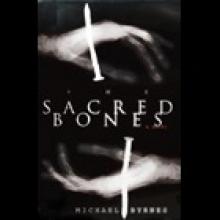 The Sacred Bones
The Sacred Bones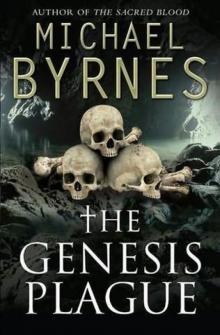 The Genesis Plague (2010)
The Genesis Plague (2010)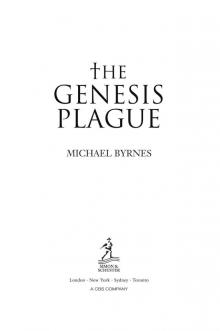 The Genesis Plague
The Genesis Plague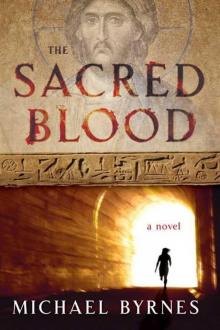 The Sacred Blood
The Sacred Blood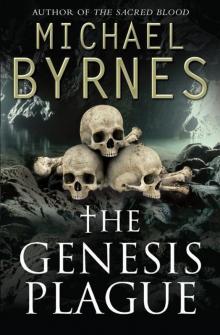 The Genesis Plague tf-1
The Genesis Plague tf-1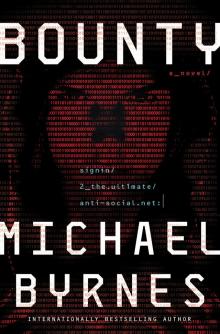 Bounty
Bounty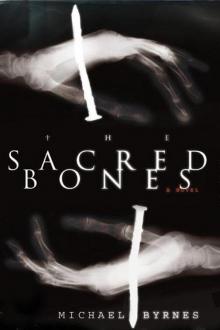 Sacred Bones : A Novel
Sacred Bones : A Novel